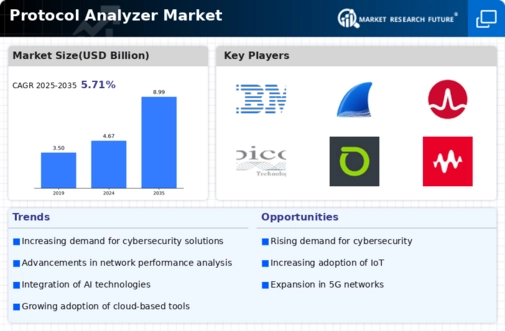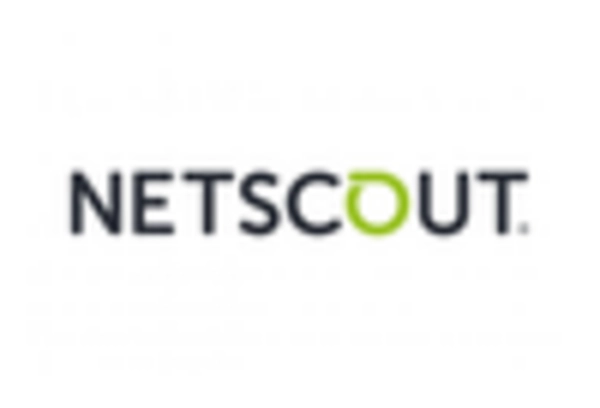Adoption of IoT Devices
The proliferation of Internet of Things (IoT) devices is significantly impacting the Protocol Analyzer Market. As more devices become interconnected, the volume of data transmitted across networks increases exponentially. This surge in data traffic necessitates the use of protocol analyzers to ensure seamless communication and performance optimization. Industry reports suggest that the number of IoT devices is expected to exceed 30 billion by 2025, creating a pressing need for effective monitoring solutions. Protocol analyzers enable organizations to manage the complexities associated with IoT deployments, ensuring that data flows efficiently and securely across diverse devices and platforms.
Rising Cybersecurity Threats
The escalating threat landscape is a prominent driver for the Protocol Analyzer Market. As cyberattacks become more sophisticated, organizations are compelled to invest in advanced security measures. Protocol analyzers play a vital role in identifying and mitigating these threats by analyzing network traffic for anomalies and potential breaches. Recent statistics indicate that cybercrime is projected to cost businesses over 10 trillion dollars annually by 2025, highlighting the urgency for robust cybersecurity solutions. By employing protocol analyzers, organizations can enhance their threat detection capabilities, thereby safeguarding sensitive information and maintaining operational integrity in an increasingly perilous digital environment.
Increasing Network Complexity
The rise in network complexity is a notable driver for the Protocol Analyzer Market. As organizations expand their IT infrastructure, the number of devices and connections increases, leading to intricate network environments. This complexity necessitates advanced tools for monitoring and troubleshooting, which protocol analyzers provide. According to recent data, the number of connected devices is projected to reach 75 billion by 2025, underscoring the need for effective network management solutions. Protocol analyzers enable IT professionals to dissect network traffic, identify bottlenecks, and ensure optimal performance. Consequently, the demand for these tools is likely to surge as businesses seek to maintain efficiency in increasingly convoluted networks.
Regulatory Compliance Requirements
Regulatory compliance is a critical factor influencing the Protocol Analyzer Market. Organizations across various sectors are mandated to adhere to stringent regulations regarding data security and network integrity. For instance, industries such as finance and healthcare face rigorous compliance standards that necessitate the use of protocol analyzers to monitor and secure data transmissions. The market for compliance-related technologies is expected to grow significantly, with estimates suggesting a compound annual growth rate of over 10% in the coming years. Protocol analyzers assist organizations in ensuring compliance by providing detailed insights into network traffic and identifying potential vulnerabilities, thereby fostering a culture of accountability and security.
Advancements in Network Technologies
Technological advancements in networking are driving growth in the Protocol Analyzer Market. Innovations such as 5G, software-defined networking (SDN), and network function virtualization (NFV) are reshaping how networks operate. These advancements introduce new protocols and standards, necessitating the use of protocol analyzers to ensure compatibility and performance. The 5G rollout, for instance, is expected to enhance data transmission speeds and reduce latency, but it also requires sophisticated monitoring tools to manage the increased complexity. As organizations adopt these cutting-edge technologies, the demand for protocol analyzers is likely to rise, enabling businesses to leverage the full potential of their network investments.


















Leave a Comment